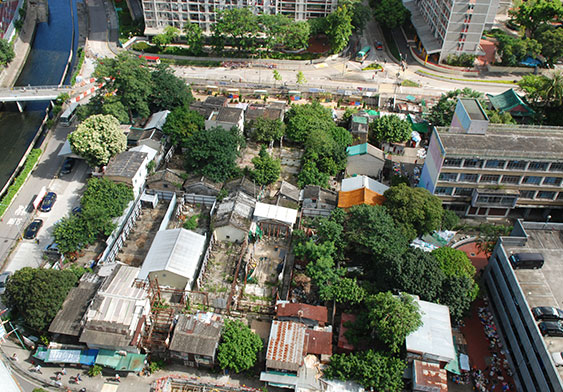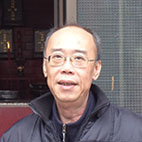
Nga Tsin Wai village is now overgrown with trees
Of Ng Yiu Fai’s family’s three ancestral houses, only the one at 3rd Lane has not been demolished-Photo taken by HKMP Team (2012)
Nga Tsin Wai village is now overgrown with trees
Of Ng Yiu Fai’s family’s three ancestral houses, only the one at 3rd Lane has not been demolished-Photo taken by HKMP Team (2012)
Of the three ancestral dwellings owned by Ng Yiu Fai’s family, one was a complete house while the other two were half units
Ng Yiu Fai’s family owned three houses in Nga Tsin Wai which were located respectively at No. 8, at the end of 3rd Lane and at 5th Lane. The dwelling at No. 8, 3rd Lane had been built well over 100 years before. The three homes, which the family always called “ancestral houses”, were passed down by Ng Yiu Fai’s grandfather, with ownership shared between his father and two younger uncles. Most houses within the walled village measured some 20-foot long by 10-foot wide (i.e. around 0.01 acres) and were divided into several width types such as 9, 11 and 13 pit of tiles. The ancestral house at No. 8, 3rd Lane was a complete house (complete houses occupied 0.01 acres whereas half houses occupied 0.005 acres), whereas the house at the end of 3rd Lane was a half house with the remaining 0.005 acre of land being owned by Ng Yiu Fai’s uncles. The house at 5th Lane was also a half house, with the other 0.005 acre of land belonging to his grandmother’s relatives. The three ancestral houses were what was called “poke mud houses” in which builders had used granite of varying sizes to build walls and mud or cement to poke between gaps in the stone. In other words, the dwellings were not really stone houses at all.


 BACK
BACK  CLOSE
CLOSE 